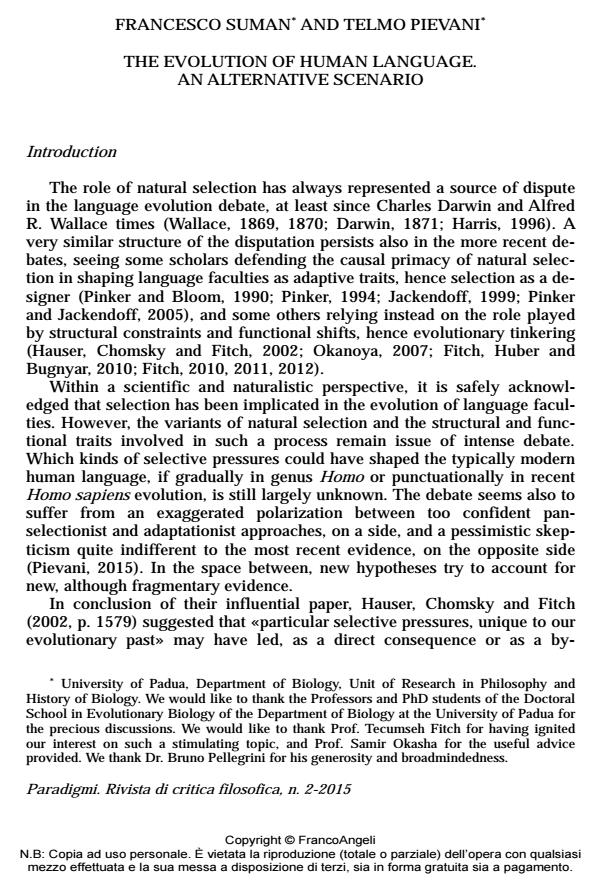The evolution of human language. an alternative scenario
Journal title PARADIGMI
Author/s Francesco Suman, Telmo Pievani
Publishing Year 2015 Issue 2015/2
Language Italian Pages 24 P. 173-196 File size 100 KB
DOI 10.3280/PARA2015-002011
DOI is like a bar code for intellectual property: to have more infomation
click here
Below, you can see the article first page
If you want to buy this article in PDF format, you can do it, following the instructions to buy download credits

FrancoAngeli is member of Publishers International Linking Association, Inc (PILA), a not-for-profit association which run the CrossRef service enabling links to and from online scholarly content.
We develop Deacon’s (2010) proposal on the role of relaxed selection in the evolution of human language, providing a sound evolutionary background for it, within the human "Self-Domestication" hypothesis (Gibbons, 2014). We focus in particular on neotenic features of life-history traits and brain development, characteristics of modern Homo sapiens, suggesting that they could have spread in an ecological context in which some selective pressures were relaxed. We give an account of how such an ecological condition could have been reached in hominid evolution, relying on the feedback effects of niche construction processes, bringing the case of the use of fire. We provide some future possible directions in order to make our hypothesis testable, suggesting it could help solving some issues concerning human evolution and the evolution of language.
Keywords: Exaptation, Language evolution, Neoteny, Niche construction, Relaxed selection, Self-domestication.
Francesco Suman, Telmo Pievani, The evolution of human language. an alternative scenario in "PARADIGMI" 2/2015, pp 173-196, DOI: 10.3280/PARA2015-002011